Perpetual Platform aims to decipher the operating logic that curates Ciutadella Park as a platform for urbanism. The project is a step in developing a holistic understanding of what Ciutadella Park does, to effectively move beyond ‘what it is’. It is an exercise in exploring the performance of urban platforms over aesthetics, to determine the static functionalities and the evolving practices that stack over time to nurture a unique platform (much like a stamp) for Barcelona. [Perpetual] Platform illustrates the functional logic of Ciutadella Park is that the site is a platform for ‘The Display of History & Identity to the Other’.
2022: ARCHIVE OF INFORMATION
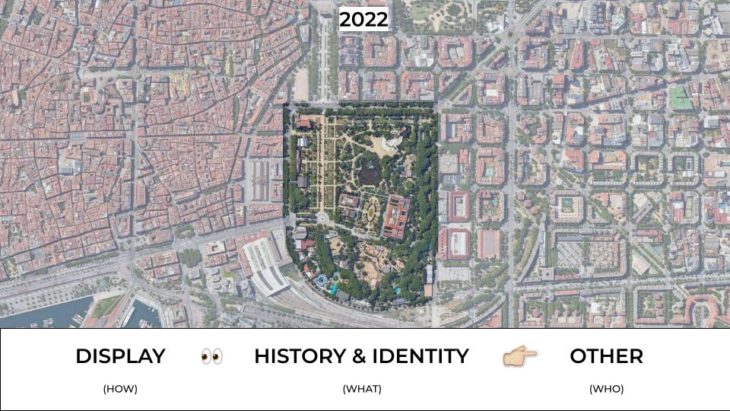
Ciutadella Park is a curated display of national heritage. Manicured gardens, repurposed military architecture and egalitarian functions are housed and hosted by the site. The park is also controversially at the center of displays of dissent by the citizens against the state. Currently, the park is a symbolic passage at the center of Barcelona, narrating history and exemplifying a modern identity through a reservoir of art, objects, installations and architecture curating a unique stamp over the city. It is always busy with tourists and touristic activities as a major point of attraction and also occupies the aspirations of the locals. Ciutadella Park emerges as a unique public platform – an amalgamation of urban natural spaces of historical reverence, high influx of visitors and a strategic positioning as a ritualistic pathway into the historic center of Barcelona, a platform for ‘The Display of History & Identity to the Other’.
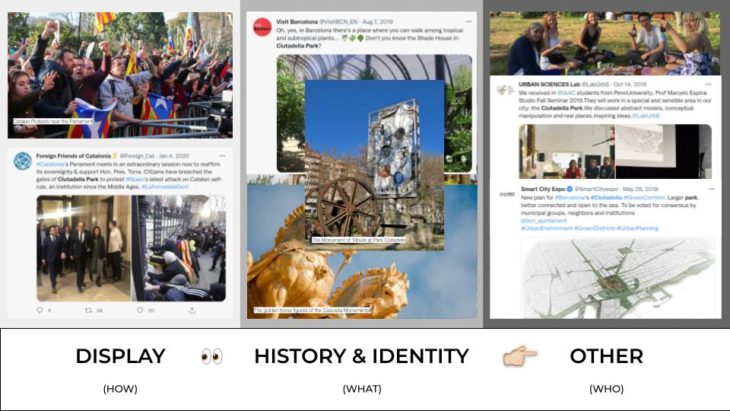
However, this is nothing new!
1888: ARCHIVE OF EXHIBIT
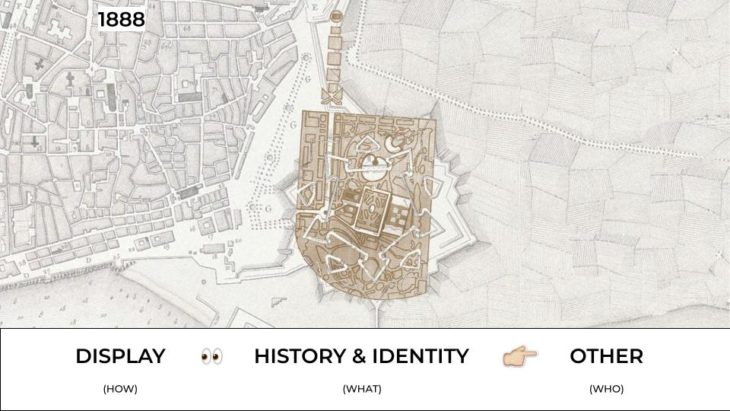
After the war of the Spanish succession in 1714 the Spanish established plans for a fortress at the Ciutadella Park. A grand 5 pointed fortress was erected that served to be a symbol of oppression and a display of power for little over a century. In 1888 however, post General Prim turned over what was left of the Fortress to the city, architect Josep Fontsére planned the transformation of Fortress into a contemporary park. With the Geological Museum, built in 1882 by Antoni Rovira i Trias in neoclassical style and “L’Hivernacle” (the winter garden is a pavilion made of cast iron and glass) in 1884, the city was getting ready to host the world. In 1888, the park was redesigned for the Exposición Universal de Barcelona. Even then, the operating logic of the site was intact. The Exposition was curated to be a display of dynamic growth and prosperity, an attempt to establish a new, more public-centric history, along with a broader global identity. This showcase was particularly aimed to impress major foreign dignitaries, monarchs, heads of states and mayors of other European capitals. Interestingly enough, the colonial subjects didn’t only never enjoyed equal access as the other but they weren’t even recognized as equal ‘humans’.
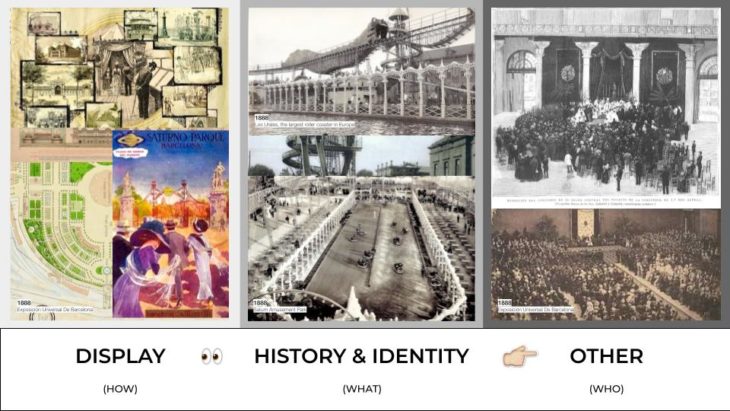
The evolution of Ciutadella Park indicates that the operating logic governing the site has been similar for the past 300 years. Considering this, what would Ciutadella Park evolve into in the future? Not what it would look like, but how it would perform and more importantly adopt within the operating logic of, ‘The Display of History & Identity to the Other’.
2100: ARCHIVE OF OPINIONS
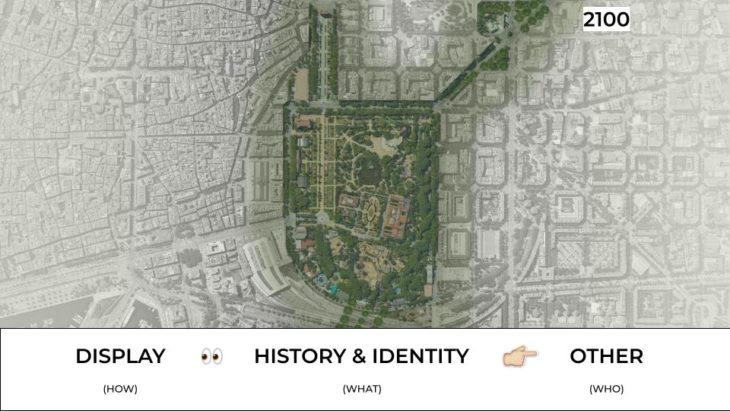
The future expansion of Ciutadella already focuses on providing the city of Barcelona with a new diagonal, perpendicular to the previous one, to create a green corridor. With an area of ??22 hectares, the new park will emerge from the underground railway line, developing with three objectives: to create an axis that connects the city center with the new urban growth; open a slow road whose protagonists are pedestrians and cyclists, and, finally, establish an ecological corridor that links, extending through the Valley of Besós, the sea with the mountains, nature with the city.
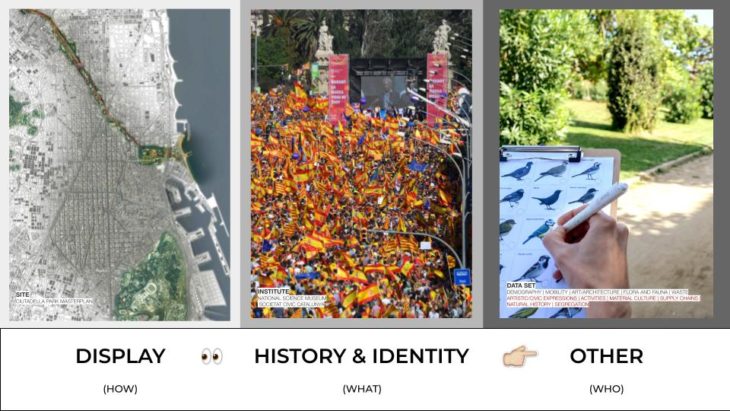
In reference to the upcoming challenges of the future, [Perpetual] Platform once again, illustrates the operating logic of Ciutadella Park as the site as a platform for ‘The Display of History & Identity to the Other’, focusing on the understanding of technologies needed for said operations by monitoring and analysis how does the site evolve whilst acknowledging that the future will not be more like the present. Future technologies will progressively unravel the multidimensional sensory displays and effective virtual imagining, displaying performances that would have to be catalogued and experienced beyond seeing. The history and identity of the site could be shaped by hyper-local, global narratives and conglomeration of real time data to host simultaneous activities and events. Immortalizing daily characters and neighbourhood personalities would also be catalysed. Moreover, the transit oriented development project and the holistic progression of technology will fundamentally force us to re-think the ‘other’. The possibility of then including different species, flora & fauna or imagining the complete biosphere as the ‘other’ becomes tangible. 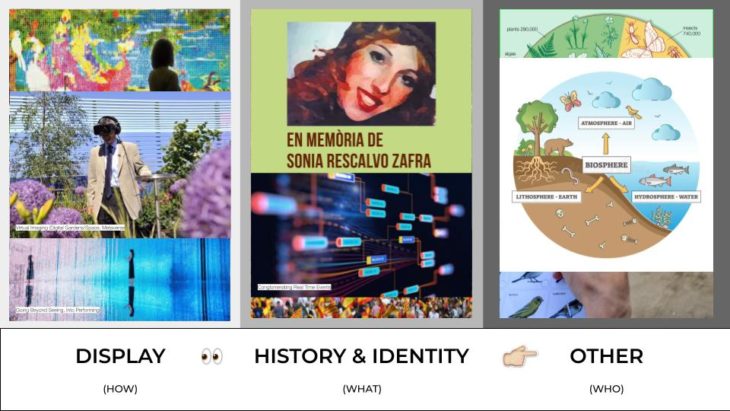
PLATFORM URBANISM: ‘The design of a problem is the first step towards its solution’
Holistically speaking, the project attempts to curate the site of Ciutadella Park as a [Perpetual] Platform for ‘The Display of History & Identity to the Other’. It exemplifies how deciphering the underlying logic of platform urbanism can help generate a strong operative and functional logic that guides urbanism on site. Moreover, using institutes like the National Science Museum and Civic Society of Catalunya, a more complex database of demography, mobility, art/architecture, flora and fauna & waste can be developed in accordance with artistic/civic expressions, cyclic activities, material culture, supply chains, natural history and patterns of segregation, aiding the city to be better equipped and in cognizance of the display of (possibly its collective memory) history & identity to the other.
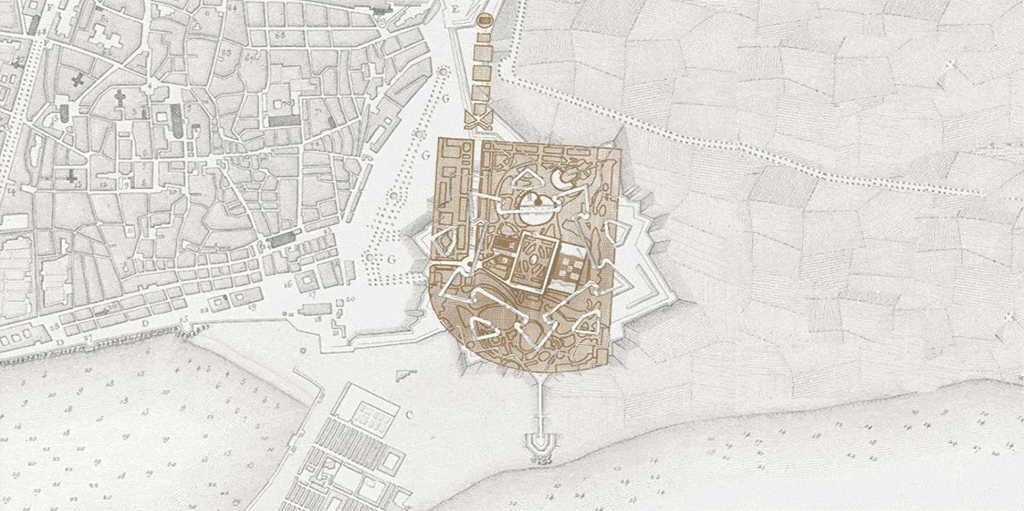
[PERPETUAL] PLATFORM is a project of IAAC, Institute for Advanced Architecture of Catalonia developed in the Master in City & Technology 2021/22 by Students: Karim Abillama, Pushkar Runwal, Parshav Sheth, and Faculty: Nicolay Boyadjiev